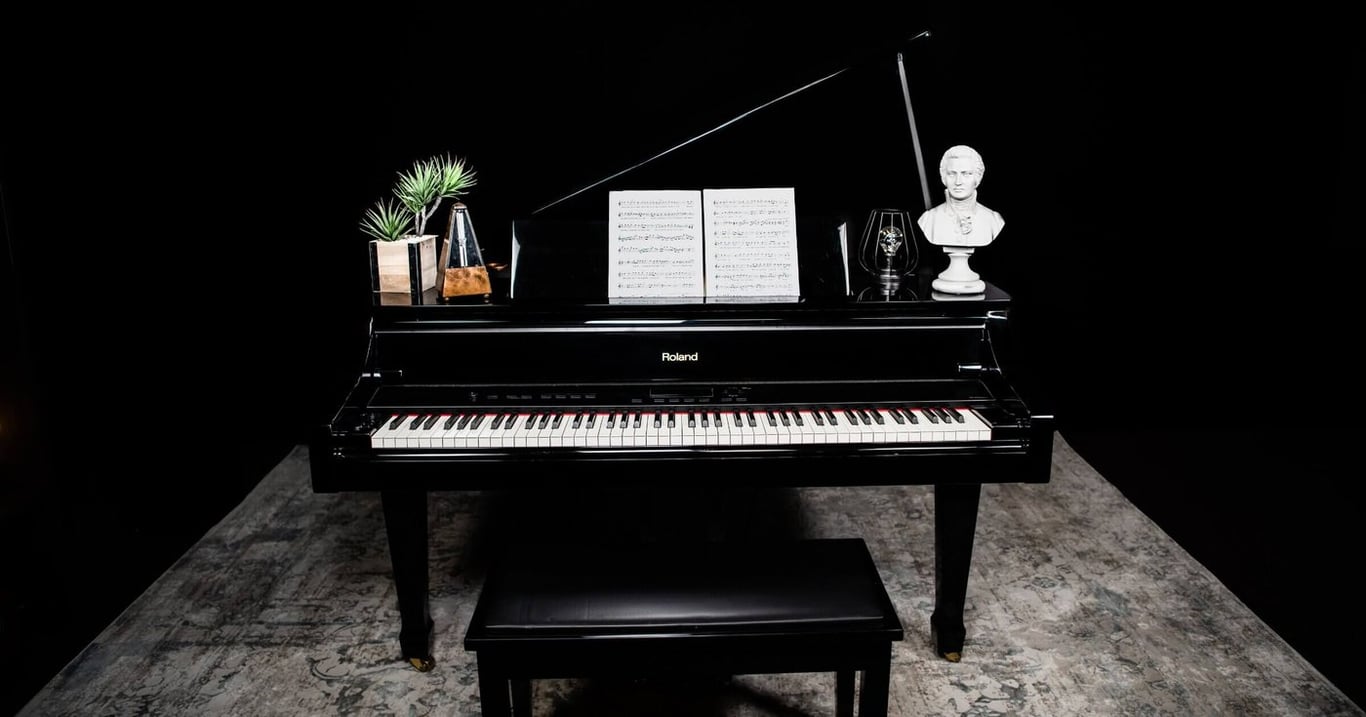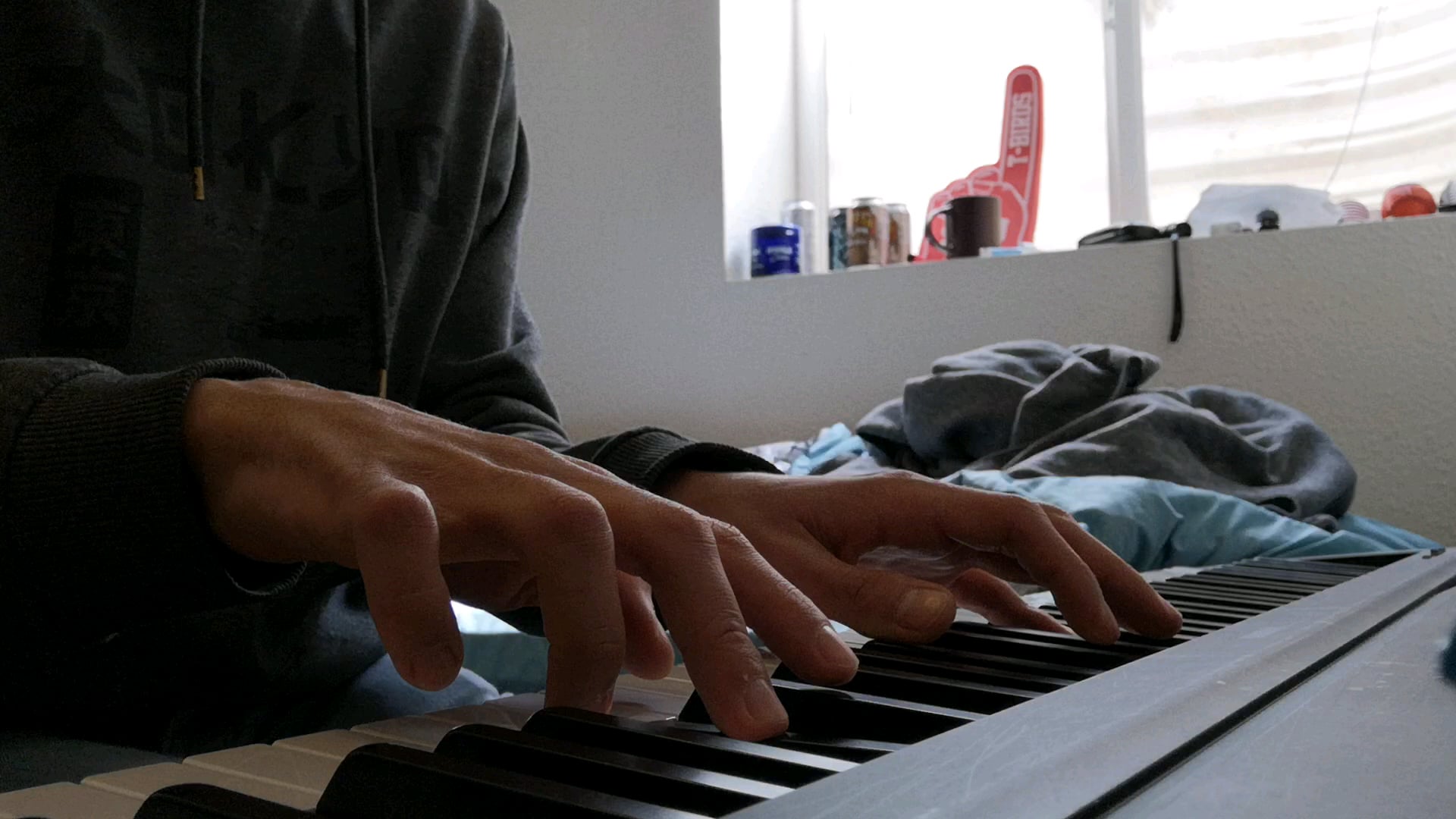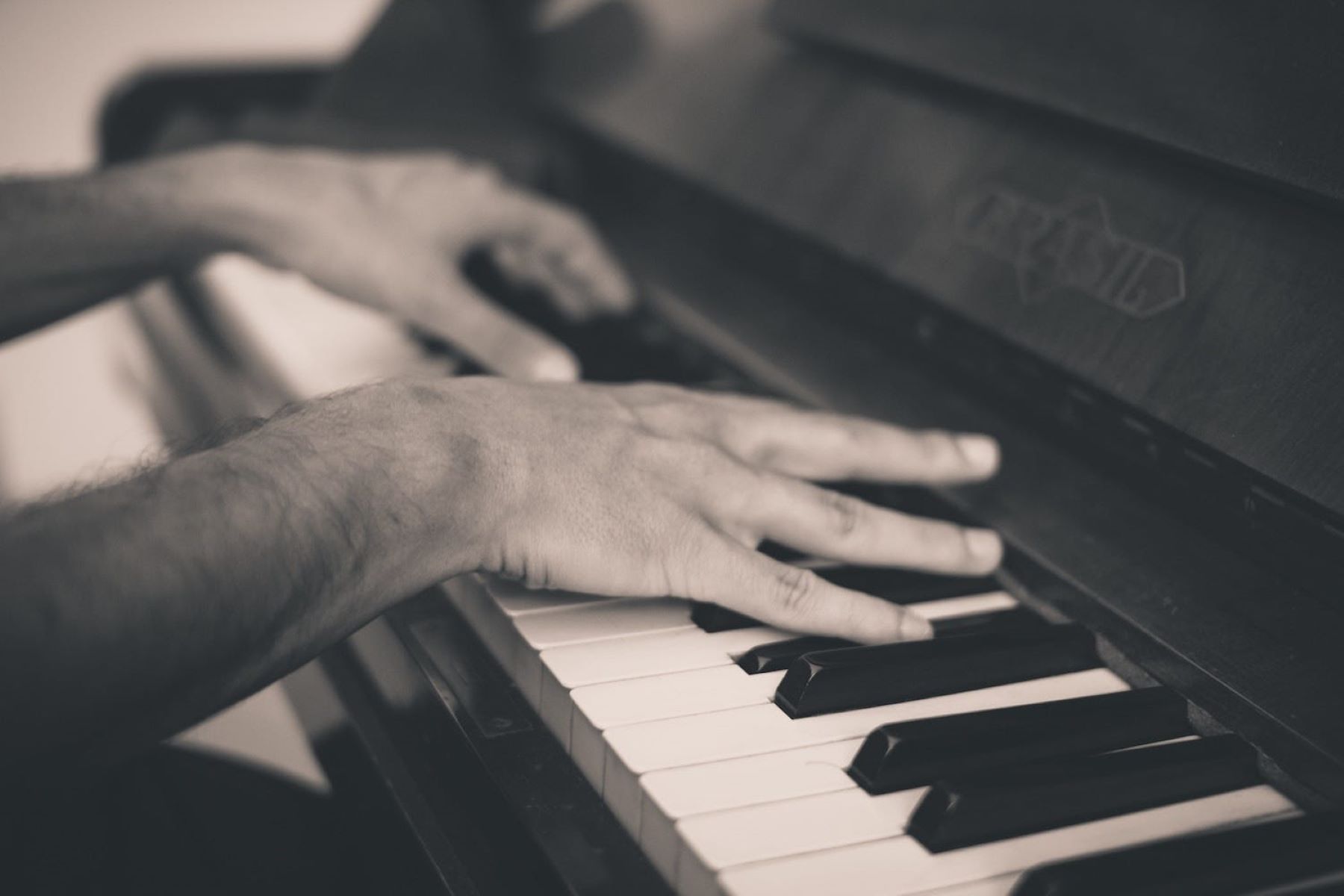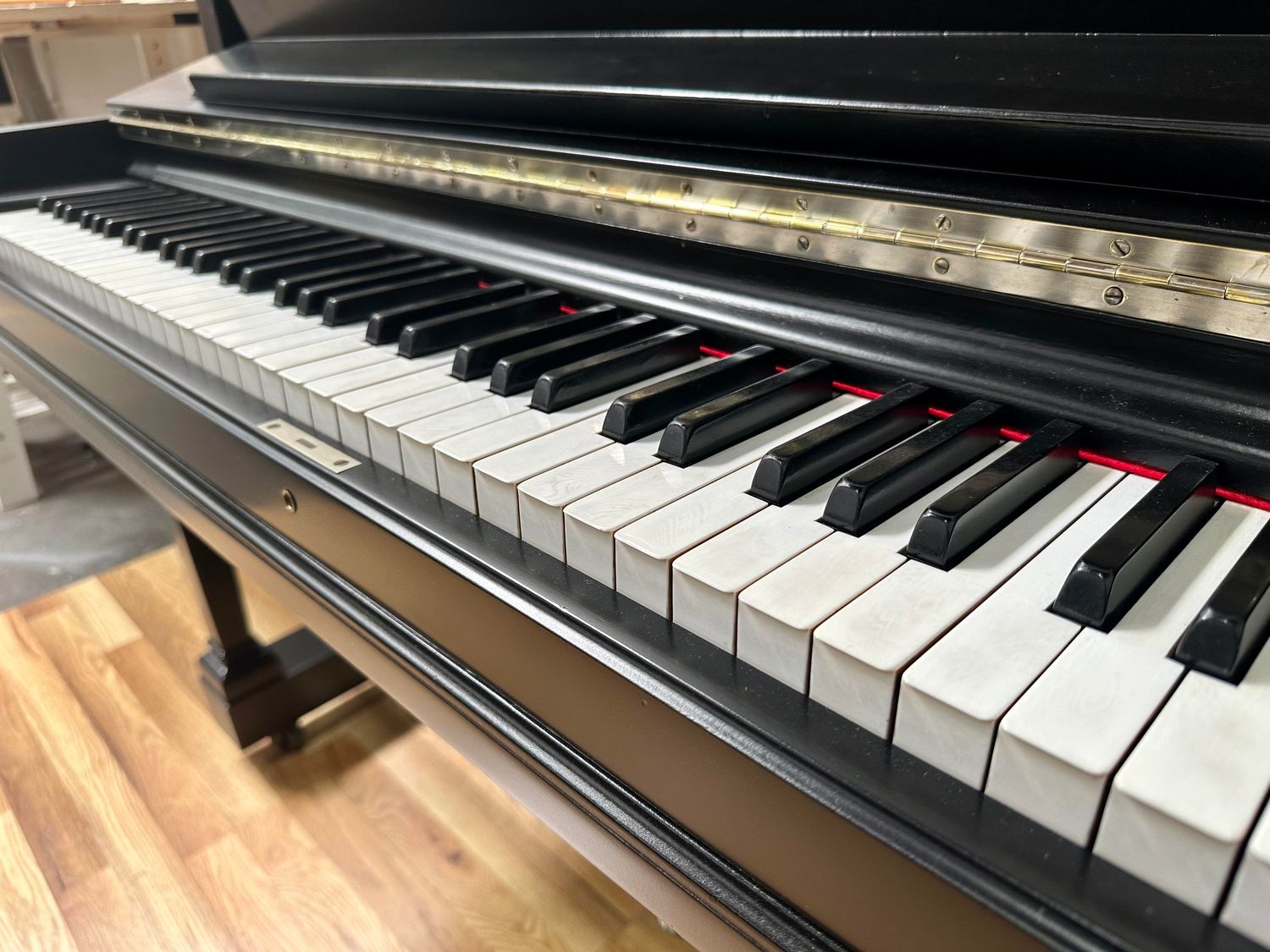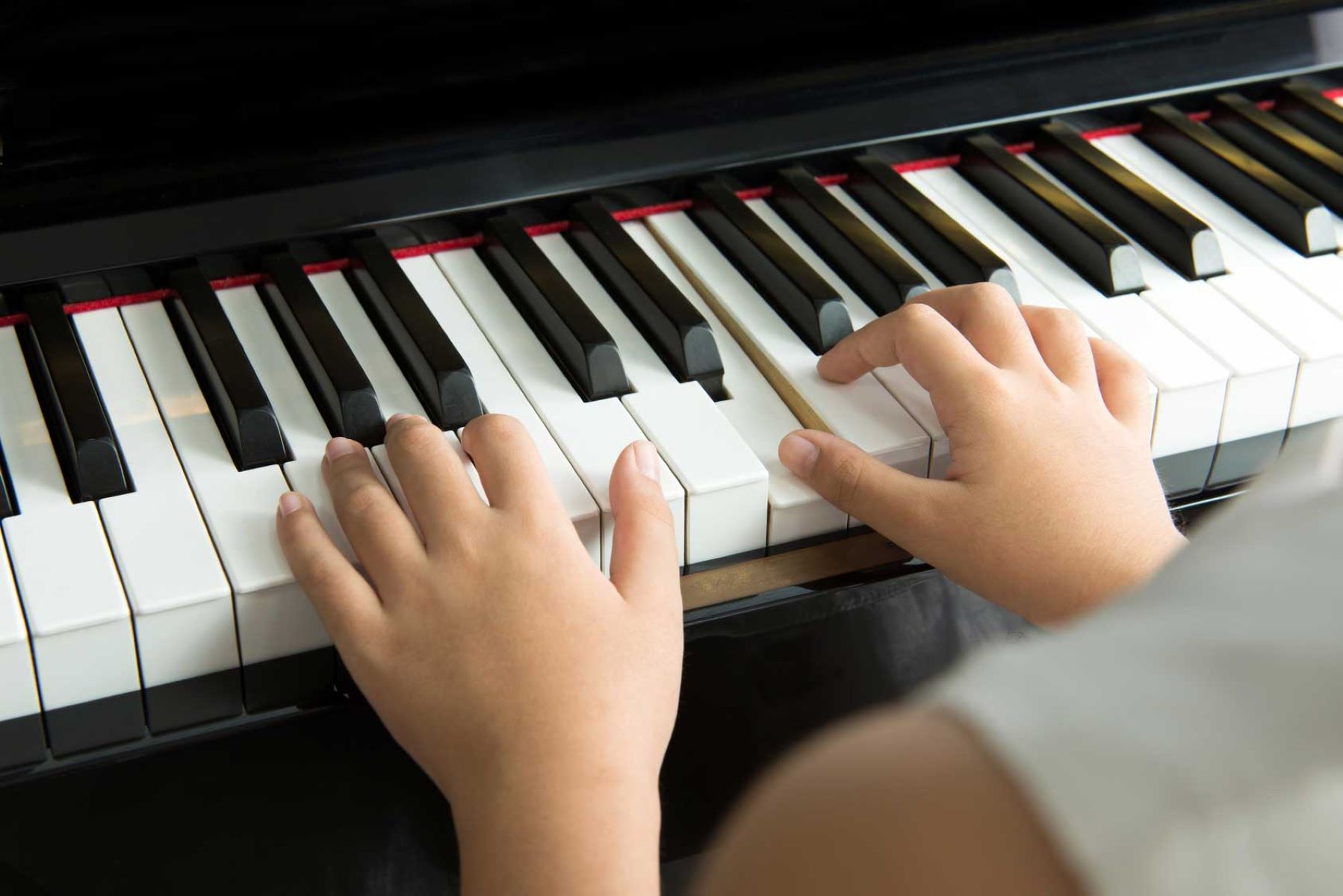Home>Instruments>Piano>How Do You Play A Piano


Piano
How Do You Play A Piano
Modified: February 11, 2024
Learn how to play a piano with our step-by-step guide. Discover essential techniques and tips for mastering the piano. Start your musical journey today!
(Many of the links in this article redirect to a specific reviewed product. Your purchase of these products through affiliate links helps to generate commission for AudioLover.com, at no extra cost. Learn more)
Table of Contents
Introduction
Playing the piano is a captivating and rewarding endeavor that allows individuals to express their creativity and emotions through music. Whether you are a beginner or an experienced musician, mastering the art of piano playing requires dedication, practice, and a deep understanding of musical techniques. In this comprehensive guide, we will explore the fundamental aspects of playing the piano, from getting familiar with the instrument to developing advanced skills.
The piano, with its rich history and timeless appeal, has been a staple of musical compositions for centuries. Its versatility allows for a wide range of musical styles, from classical and jazz to pop and rock. As you embark on your journey to learn the piano, you will discover the profound joy of creating beautiful melodies and harmonies with just the touch of your fingertips.
Throughout this guide, we will delve into essential techniques, such as reading sheet music, mastering piano scales and chords, and playing simple songs. Additionally, we will explore the nuances of developing advanced piano skills, including improvisation, interpretation, and performance.
Whether you aspire to play for personal enjoyment, entertain friends and family, or pursue a career in music, the knowledge and skills gained from this guide will serve as a solid foundation for your musical journey. So, let's embark on this melodic adventure and unlock the boundless potential of piano playing.
Getting Familiar with the Piano
Before diving into the intricacies of piano playing, it’s essential to develop a strong familiarity with the instrument itself. The piano consists of 88 keys, including white and black keys, each with a specific pitch and musical function. Understanding the layout of the keyboard is crucial, as it forms the foundation for playing melodies, harmonies, and chords.
Begin by acquainting yourself with the basic components of the piano, such as the keyboard, pedals, and internal mechanisms. Sit comfortably at the center of the keyboard, ensuring that your posture allows for unrestricted movement and proper hand positioning. Familiarize yourself with the pedal functions, including the sustain, soft, and sostenuto pedals, as they play a vital role in shaping the piano’s sound.
Take a moment to observe the arrangement of the keys, noting the pattern of white and black keys that repeat across the keyboard. The black keys are grouped in sets of two and three, creating visual and tactile reference points for navigating the keyboard. Understanding this pattern is crucial for identifying notes, intervals, and scales during the learning process.
As you familiarize yourself with the piano, take note of the unique tactile and auditory feedback produced by the keys. Each key responds differently to touch, offering varying degrees of resistance and responsiveness. This tactile sensitivity is integral to developing dynamic control and expression while playing the piano.
Furthermore, explore the sonic range of the instrument by experimenting with different key combinations and observing how the sound evolves from soft, delicate notes to powerful, resonant tones. Becoming attuned to the piano’s dynamic capabilities will inform your playing style and interpretation of musical pieces.
By immersing yourself in the physical and sonic characteristics of the piano, you lay the groundwork for a deeper connection with the instrument. This familiarity will serve as a springboard for mastering techniques, interpreting musical nuances, and ultimately expressing your musicality through the captivating medium of piano playing.
Basic Piano Techniques
Mastering basic piano techniques is essential for developing a strong foundation in piano playing. These techniques encompass fundamental skills that enable you to navigate the keyboard, produce clear and expressive sounds, and establish a solid grasp of musical concepts.
Hand Positioning: Begin by adopting the correct hand positioning, with your fingers gently curved and resting on the keys. The natural curve of the fingers allows for precise and fluid movement across the keyboard, facilitating agility and dexterity in playing various musical passages.
Finger Independence: Developing finger independence is crucial for executing intricate melodies and harmonies. Practice exercises that focus on individual finger strength and coordination, gradually increasing the dexterity of each finger to navigate the keys with precision.
Posture and Alignment: Maintain proper posture and alignment while sitting at the piano, ensuring that your back is straight but relaxed, and your arms are parallel to the keyboard. This posture promotes comfort and minimizes strain during extended practice sessions.
Articulation and Dynamics: Explore the nuances of articulation and dynamics, which encompass the varied ways in which notes are played and the intensity of their expression. Experiment with legato (smooth and connected) and staccato (short and detached) playing styles, and practice controlling the volume and expression of the music through dynamic variations.
Basic Scales and Arpeggios: Familiarize yourself with major and minor scales, as well as arpeggios, which are essential building blocks of piano technique. Practicing scales and arpeggios not only enhances finger agility and coordination but also deepens your understanding of musical intervals and tonal relationships.
Pedal Technique: Learn to use the sustain pedal judiciously to sustain and enhance the resonance of certain notes and chords. Understanding pedal technique adds depth and richness to your playing, allowing for seamless transitions between harmonies and creating a more resonant sound.
By honing these basic piano techniques, you lay the groundwork for a proficient and expressive piano playing style. These foundational skills serve as the building blocks for tackling more complex musical pieces and delving into advanced piano repertoire.
Reading Sheet Music
Sheet music serves as the written language of music, conveying musical notation and instructions to the pianist. Developing the ability to read sheet music is a fundamental skill that empowers pianists to interpret and perform a vast array of musical compositions. Whether you aspire to play classical masterpieces, contemporary pieces, or your own compositions, proficiency in reading sheet music is indispensable.
Understanding Musical Notation: Familiarize yourself with the elements of musical notation, including notes, rests, clefs, key signatures, time signatures, and dynamics. Each component provides essential information regarding pitch, rhythm, tempo, and expression, guiding the pianist through the intricacies of a musical piece.
Identifying Notes on the Staff: Grasp the correlation between the notes on the staff and their corresponding keys on the piano. Practice associating each note on the staff with its location on the keyboard, gradually internalizing the spatial relationship between the written notation and the piano’s layout.
Rhythmic Interpretation: Develop proficiency in interpreting rhythmic patterns and durations indicated in the sheet music. Mastering rhythmic notation allows for precise timing and execution of musical passages, ensuring that the piece flows with rhythmic accuracy and musical integrity.
Music Theory Fundamentals: Delve into basic music theory concepts, such as scales, intervals, chords, and chord progressions, to deepen your understanding of the harmonic and melodic structures present in the sheet music. This knowledge enhances your ability to interpret and express the musical nuances embedded within the composition.
Sight-Reading Practice: Engage in regular sight-reading exercises to improve your ability to interpret and perform music in real time. Sight-reading challenges you to play music that you have not previously studied, honing your adaptability and enhancing your overall musicianship.
Expression and Interpretation: Embrace the expressive markings and phrasing indications present in the sheet music, allowing them to guide your interpretation of the piece. Dynamics, articulations, and expressive markings imbue the music with emotion and character, shaping your performance into a compelling musical narrative.
By mastering the art of reading sheet music, you unlock a treasure trove of musical possibilities, enabling you to explore diverse genres and immerse yourself in the rich tapestry of piano repertoire. This proficiency empowers you to breathe life into musical compositions, infusing them with your unique artistic interpretation and emotional depth.
Practicing Piano Scales and Chords
Delving into the realm of piano scales and chords is a transformative journey that fosters technical proficiency, musical understanding, and improvisational skills. Scales and chords form the bedrock of harmonic and melodic exploration, providing pianists with a comprehensive toolkit for creating and interpreting music across various genres and styles.
Scale Mastery: Begin by acquainting yourself with major and minor scales, understanding their unique patterns and fingerings across the keyboard. Practice scales in ascending and descending sequences, focusing on achieving evenness, clarity, and precision in each note. Mastery of scales cultivates finger dexterity, hand coordination, and a heightened awareness of tonal relationships.
Chord Progressions: Explore common chord progressions and their inversions, immersing yourself in the harmonic landscape of music. Understanding chord structures and progressions equips you with the ability to accompany melodies, improvise harmonies, and comprehend the underlying harmonic framework of musical compositions.
Technical Exercises: Engage in technical exercises that target specific aspects of piano playing, such as finger strength, agility, and flexibility. These exercises may include trills, octave repetitions, and hand independence drills, enhancing your technical prowess and fortifying your fingers for demanding musical passages.
Arpeggio Exploration: Delve into arpeggios, which are broken chords that unfold melodically across the keyboard. Practice arpeggios in various keys and patterns, honing your ability to navigate chordal sequences with fluidity and expressiveness. Arpeggios contribute to the development of a nuanced and agile playing technique.
Transposition and Modulation: Experiment with transposing scales and chords to different keys, broadening your musical fluency and adaptability. Additionally, explore modulation, the process of transitioning between keys within a musical piece, to expand your understanding of tonal relationships and harmonic modulation.
Ear Training: Cultivate your ear for identifying scales and chords by engaging in ear training exercises. Develop the ability to recognize tonalities, intervals, and chord qualities by ear, enhancing your musical perception and facilitating improvisation and composition.
By dedicating time to practicing piano scales and chords, you nurture a profound understanding of harmonic structures, melodic patterns, and tonal relationships. These foundational elements serve as the building blocks for improvisation, composition, and the nuanced interpretation of musical compositions, enriching your musical journey with depth and versatility.
Playing Simple Songs
Embarking on the journey of playing simple songs on the piano is an enriching experience that allows aspiring pianists to apply their developing skills in a musical context. Simple songs, often characterized by memorable melodies and straightforward chord progressions, serve as stepping stones for honing fundamental techniques, building confidence, and experiencing the joy of musical expression.
Song Selection: Choose simple, well-loved melodies and songs that resonate with you, such as traditional folk tunes, children’s songs, or beginner-level pieces from various musical genres. Opt for compositions with uncomplicated rhythms and melodic structures to facilitate the learning process.
Chord Accompaniment: Explore chord accompaniment patterns that complement the melody, allowing you to play both the melody and chords simultaneously. This approach provides a holistic understanding of song structure and fosters coordination between the hands, laying the groundwork for more intricate piano arrangements in the future.
Melody Emphasis: Prioritize the clarity and expressiveness of the melody, ensuring that it shines through amidst the accompaniment. Pay attention to phrasing, dynamics, and articulation to imbue the melody with musicality and emotion, fostering a captivating and engaging performance.
Rhythmic Precision: Develop a keen sense of rhythmic precision by aligning the notes with the underlying pulse of the music. Practice maintaining a steady tempo and executing rhythmic patterns accurately, enhancing the overall coherence and fluidity of the performance.
Dynamic Variation: Experiment with dynamic variations to infuse the song with ebb and flow, utilizing changes in volume and expression to convey musical nuances. Dynamic contrast enriches the musical narrative, adding depth and emotion to the interpretation of the piece.
Artistic Interpretation: Embrace the opportunity to imbue simple songs with your artistic interpretation, infusing them with your unique style and musical sensibilities. Expressive liberties, such as rubato (tempo flexibility) and nuanced phrasing, allow you to personalize the performance and breathe life into the music.
Playing simple songs on the piano serves as a gateway to musical expression, fostering a deep connection with the instrument and nurturing a sense of accomplishment. These foundational experiences pave the way for tackling more complex repertoire, refining technical skills, and exploring the boundless creativity inherent in piano playing.
Developing Advanced Piano Skills
As pianists progress in their musical journey, the pursuit of advanced piano skills opens doors to a world of artistic expression, technical virtuosity, and profound musical insight. Developing advanced skills elevates piano playing to a level of mastery, enabling musicians to tackle intricate compositions, engage in improvisation, and deliver captivating performances with finesse and artistry.
Technical Proficiency: Refine technical mastery through dedicated practice of complex scales, arpeggios, and challenging technical exercises. Focus on achieving precision, agility, and control, allowing for effortless navigation of demanding musical passages.
Expressive Interpretation: Delve into the nuances of expressive interpretation, exploring the subtleties of phrasing, articulation, and dynamic shading. Infuse each note with emotion and intention, crafting a compelling musical narrative that resonates with audiences.
Advanced Repertoire: Embrace the exploration of advanced piano repertoire, encompassing works from renowned composers and diverse musical periods. Tackle compositions that present technical and interpretive challenges, expanding your musical horizons and deepening your artistic sensibilities.
Improvisation and Composition: Cultivate improvisational skills, allowing for spontaneous musical creation and exploration. Additionally, consider delving into composition, expressing your musical ideas through original piano compositions, fostering creativity and self-expression.
Performance Proficiency: Hone performance proficiency through regular public performances, recitals, and competitions. Embrace opportunities to share your musical artistry with audiences, refining stage presence and communication through music.
Collaborative Musicianship: Engage in collaborative musicianship by accompanying instrumentalists, vocalists, or ensembles. Collaborative experiences enhance ensemble skills, musical communication, and adaptability as a pianist.
Continual Learning and Exploration: Maintain a spirit of continual learning and exploration, seeking inspiration from diverse musical genres, historical periods, and pianistic traditions. Embrace lifelong learning as a means of evolving as a musician and deepening your connection to the art of piano playing.
The pursuit of advanced piano skills is a transformative odyssey that encompasses technical refinement, artistic maturation, and a profound connection to the expressive potential of the piano. By nurturing these advanced skills, pianists unlock the ability to convey profound emotions, tell compelling musical stories, and leave an indelible mark on the world of music.
Conclusion
Embarking on the journey of piano playing is a transformative and enriching pursuit that transcends mere musical proficiency, offering a profound avenue for self-expression, creativity, and personal fulfillment. As we conclude this comprehensive guide to piano playing, it is evident that the piano serves as a gateway to a world of musical exploration, artistic discovery, and emotional resonance.
From the foundational steps of getting familiar with the piano and mastering basic techniques to the intricacies of reading sheet music, practicing scales and chords, and interpreting simple songs, each facet of piano playing contributes to the development of a well-rounded and expressive pianist. These fundamental skills pave the way for the pursuit of advanced piano techniques, including technical mastery, expressive interpretation, improvisation, and collaborative musicianship.
It is essential to recognize that the journey of piano playing is not solely defined by technical proficiency, but also by the emotional depth and artistic insight that musicians bring to their performances. The piano, with its unparalleled capacity for conveying a wide spectrum of emotions, invites pianists to infuse their interpretations with personal narratives, creating a profound connection with listeners.
As aspiring pianists, it is crucial to approach the learning process with patience, perseverance, and a spirit of curiosity. Embrace the challenges, celebrate the milestones, and revel in the joy of musical discovery. Whether you aspire to perform on grand stages, compose original works, or simply derive personal joy from playing the piano, the skills and knowledge gained from this guide will serve as a steadfast companion on your musical odyssey.
Ultimately, the art of piano playing transcends technical proficiency, evolving into a deeply personal and expressive form of communication. Through the piano, we weave intricate musical tapestries, evoke profound emotions, and share our innermost thoughts without uttering a single word. It is within this realm of artistic expression that the true essence of piano playing is revealed—a timeless journey of self-discovery, creativity, and boundless musical possibility.


